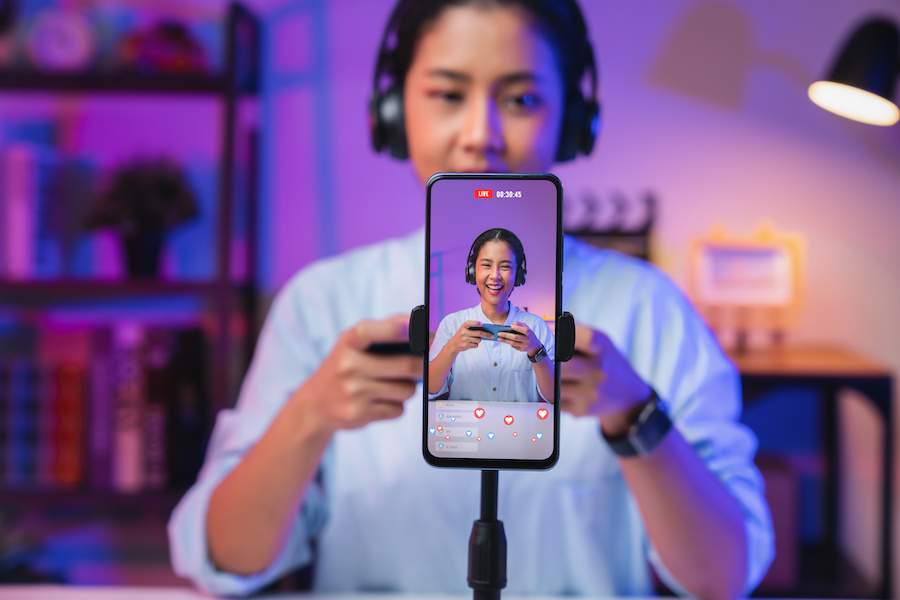A 6-Step Guide to Successful Influencer Campaigns
By Christian Brown
September 2023
Social media influencers are a power squad for brands. An influencer’s unique ability to reach and resonate with audiences gives brands significant advantages. Their authentic, relatable approach allows them to influence consumer buying decisions, making them valuable assets in the marketing world.
However, when not appropriately managed, influencers can also pose risks to brands. A cautionary tale comes from Bioré, a popular skincare brand that discovered the paper-thin line between a successful paid-partnership campaign and a business crisis.
To help promote its mental health campaign, Bioré hired Cecilee Max-Brown, a recent Michigan State graduate, a former player for its volleyball team and now a social media influencer who often posts about makeup and skincare and has more than 24,000 TikTok followers.
In early June, Max-Brown posted a Bioré-sponsored TikTok video, where she was seen using the beauty brand’s blackhead-removing strips. (The campaign’s stated goal was to “strip away the stigma of anxiety” during Mental Health Awareness Month). In the video, Max-Brown also talked about her anxiety triggers — including a campus shooting that she had experienced, an apparent reference to an incident at Michigan State in February, in which a gunman killed three students and critically wounded several others.
Critics accused Bioré of exploiting the school shootings to sell its products. Though removed less than 24 hours after it was posted, the video went viral and was captured and shared before being deleted. Social media platforms lit up with criticism of the influencer and the brand. Bioré and Max-Brown both issued online apologies a few days later.
Safeguarding brand reputation
How did a brand like Bioré, which has a history of successful influencer collaborations, land itself in such a situation this time? At our company Glewee, an influencer-marketing platform for brands, we believe the answer might lie in an all-too-common mistake that some brands make: a lack of clear communication between the influencer and the company.
Several steps might have prevented this crisis for Bioré. (To be fair, we don’t know whether Bioré took any of these steps.) For starters, brands should always be familiar with an influencer’s background and any issues that might arise. Bioré could have discovered social media posts in which Max-Brown talks about the school shooting and its effect on her.
More important, though, a detailed contract outlining what the influencer can and cannot discuss would have offered an added layer of protection. Bioré might also have implemented a more stringent approval process before the video was published. Doing so might seem like a lot of work, but it’s a small price to pay to safeguard a brand’s reputation.
From a communications perspective, the response to such a crisis is equally important. Many saw Bioré’s response as slow and lacking in sincerity, which exacerbated the situation. A well-planned crisis communication strategy could have helped the brand control the narrative and minimize the damage.
Here are some ways that communicators can navigate the complexity of influencer partnerships and set up a successful campaign:
1. Understand your influencer.
Check the prospective influencer’s social media content, personality, audience and engagement. Most important, to maintain authenticity and avoid potential conflicts, ensure that the influencer’s values and online persona align with your brand. Assess the influencer’s past partnerships, review feedback and note any controversies that could invite problems for your brand.
2. Define clear expectations.
From the outset, lay out what is expected from the influencer regarding content, frequency and message. Transparency and clear communication are key to avoiding misunderstandings and potential controversies.
3. Draw up contractual obligations.
Legal agreements offer protection for both parties involved. Make sure your contract includes clauses that cover scenarios such as what happens if an influencer deviates from agreed-upon campaign guidelines.
4. Have a crisis management plan ready.
Even after taking all precautions, things can still go wrong. Have a crisis-management plan in place that outlines how to react, who to involve and what to say.
5. Schedule regular check-ins.
Keep a line open with your influencer. Check their progress, lend a hand and address any issues as soon as they arise. Doing so builds a strong bond and keeps your campaign on the right track.
6. Analyze your influencer campaign.
Once your campaign is live, closely monitor its performance. Use analytics to track engagement, reach, conversions and other relevant metrics. Such analysis provides insights for future campaigns and lets you change course if needed.
As the Bioré incident showed, planning and careful execution matter in influencer campaigns. The goal is to build a fruitful, sustainable partnership with influencers that enhances your brand’s reputation and growth.



